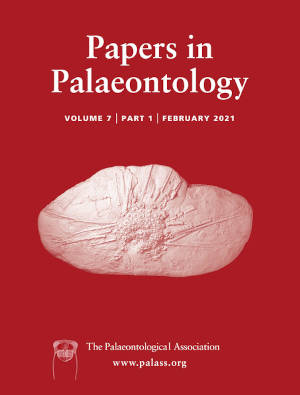Reg. Charity No. 1168330

The Beartooth Butte Formation hosts the most extensive Early Devonian macroflora of western North America. The age of the flora at Cottonwood Canyon (Wyoming) has been constrained to the Lochkovian–Pragian interval, based on fish biostratigraphy and unpublished palynological data. We present a detailed palynological analysis of the plant-bearing layers at Cottonwood Canyon. The palynomorphs consist of 32 spore, five cryptospore, two prasinophycean algae and an acritarch species. The stratigraphic ranges of these palynomorphs indicate a late Lochkovian or Pragian age, confirming previous age assignments. Analysis of samples from three different depositional environments of the plant-bearing sequence (layers with in situ lycophyte populations, flood layers that buried those populations and an organic matter accumulation zone within a flood layer) demonstrate distinct palynofacies. Comparisons between palynomorph and plant macrofossil diversity reveal some discrepancies. Whereas zosterophylls and lycophytes, most diverse and abundant among the macrofossils, have only one known corresponding spore type (assignable to zosterophylls) in the palynomorph assemblage, the trimerophytes, rare in the macrofossil assemblage, are represented by three spore types. Some of these discrepancies reflect taphonomic differences between the macrofossils and palynomorphs, while others could be due to the fact that the parent plants of most palynomorph types in the Cottonwood Canyon assemblage are unknown. These observations emphasize the need for concerted efforts to bring together the knowledge of macro- and microfloras within Early Devonian localities. Nevertheless, given the palaeophytogeographic significance of the Beartooth Butte Formation flora, its palynofossil and macrofossil assemblages, taken together, provide new data relevant to future discussions of Early Devonian biogeography.